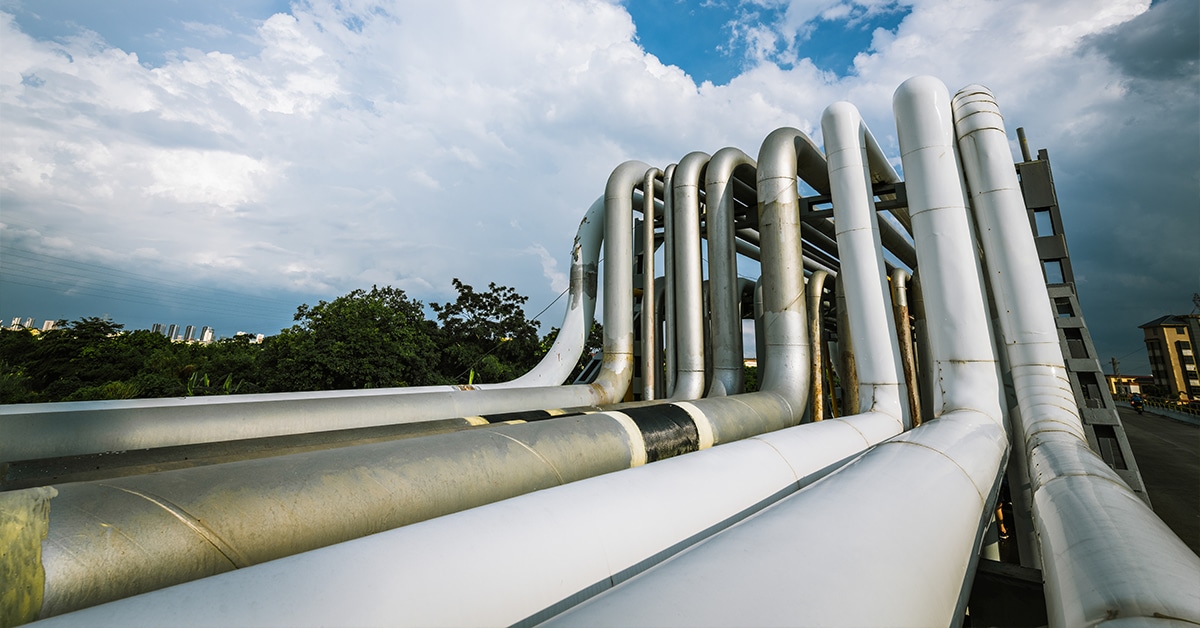Pipeline Technology

Prudent pipeline operators, including Woodway Energy Infrastructure, have a myriad of tools in their Integrity Management Program to use to help track, monitor, test and repair (if necessary) their pipeline assets. Technology continues to change and improve, and prudent operators stay current on technology and best practices. Many tools are invaluable, and technology enables pipeline operators to know more about their buried pipe than they could have ever before imagined. This data allows for accurate, timely and precise information to maintain the integrity of the pipe and keep safe our communities within which the pipelines operate. This blog provides a little history and evolution of pipeline integrity management programs.
Pipelines: Technology-Based Integrity Management / In-Line Inspections
Pipeline operators use Integrity Management Programs (IMP) to outline how they plan to monitor, track and maintain their assets. IMP is necessary to provide proper stewardship and mechanical integrity of the more than 2.6 million miles of pipelines in the US. Much of the pipeline infrastructure in the US is buried, which requires In-Line Inspections or ILIs, in order to assess integrity, and provide early identification of any required repairs to the pipeline system.
In-Line Inspections were first used in 1965 by a company called Turboscope using a device called a “Linalog”. This device determined where there was metal loss in the walls of pipe. Since then, the “intelligence” built into these Pipeline Integrity Gauges (PIGs) or “Smart PIGs” include sensors that collect data on internal and external corrosion (metal loss), geometric deformation (how round the pipe is or detecting dents or other deformities), lamination thickness (coatings applied to pipe), cracks or other defects. Simply put, Smart PIGs enable the operators to “see” inside the pipe with immense precision while the pipeline is still in service, which is critical for customers being served by the pipeline system, but also saving time and money for pipeline operators.
Older Pipelines
However, not all pipelines are ”piggable”. Lines built before 1965 and many since then would not allow the ILI tools to traverse the entire length for various reasons. Some pipelines have “tees” or “wyes” where a pipe splits to go different directions. Without guide bars, a smart tool could get caught or misdirected. Other pipes may telescope in diameter along the route using different size pipes depending on the design need making certain PIGs unable to traverse the diameter transition. Other situations could include bends too severe for a tool to make the turn, the space required to safely launch and receive a smart tool may be too constricted such as in densely populated areas, or other such inhibitors preventing a successful smart tool run.
For these older pipelines, operating companies spend hundreds of millions of dollars each year collectively (some individually spend this much) on improving their pipeline systems to make them “piggable”. These projects can stand alone as a “make piggable” project or be in conjunction with other expansion or modification projects. New pipeline projects are designed and installed with pigging capability. Further, the industry is making great strides in improving smart PIGs to compensate for some deficiencies in pipelines that would otherwise be considered unpipggable.
In-Line Inspection Methods
Smart tools are not all the same. There are three main types of ILI PIGs:
- Caliper and Geometric In-Line Inspection PIGs
- Magnetic Flux Leakage (MFL) In-Line Inspection PIGs
- Ultrasonic (UT) In-Line Inspection PIGs
Caliper PIGs use electro-magnetic sensors to pick up geometric deformations such as dents, bulging and buckling, and corrosion while also helping to locate all the pipeline features. This is invaluable information, especially with older pipe in which documentation may not have always been the most accurate. MFL PIGs use magnets to magnetically saturate the pipe while sensors detect magnetic loss from areas that have defects. UT PIGs also measure metal loss, cracking and other gouges using ultrasonic pressure waves inside the pipe wall. All three are excellent tools and coupled with the right program to read and interpret the data enhance any operator’s IMP.
Other Considerations
In addition to the various conditions inhibiting smart tool runs, pipeline operators must also consider pressures, temperatures that can limit the smart tool from completing its measurements let alone completing its entire run. Due to the electronics onboard, temperatures above 104 degrees F could affect the readings. Some tools are expanding that temperature range, but those are very customized and not always available. Further, Smart PIGs must traverse the line at a very controlled speed. Gas or water pressures behind the PIG must be maintained. Operators will set gauges along the line to ensure the PIG is moving at the correct pace.
In addition to pressure and temperature, pipeline cleanliness must also be considered. Pipes in certain service (liquid lines, especially) or pipelines susceptible to pyrophoric iron sulfides, a highly flammable black powder when exposed to air, may not be piggable or will need to be cleaned prior to any smart tool run.
